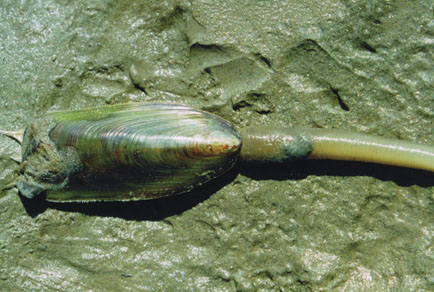Abstract
We compared shell morphology and DNA sequences of the ectosymbiotic bivalves Koreamya (Montacutidae) attached to two different species of inarticulate brachiopods Lingula collected from South Korea. There are some differences in shell morphology between K. arcuata (A. Adams, 1856) attached to Lingula anatina and K. sp. attached to L. adamsi, such as shell outline, periostracum and hinge teeth. However, there are very few differences in DNA sequences of COI and ITS1 suggesting that the two forms of Koreamya are genetically conspecific. While many ectosymbiotic Galeommatoidea species have been reported to live commensally with only one host species, this study suggested that K. arcuata lives commensally with at least two species of Lingula and that its shell morphology may vary according to the host species.

